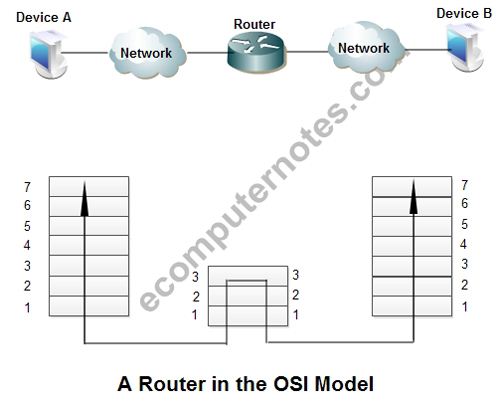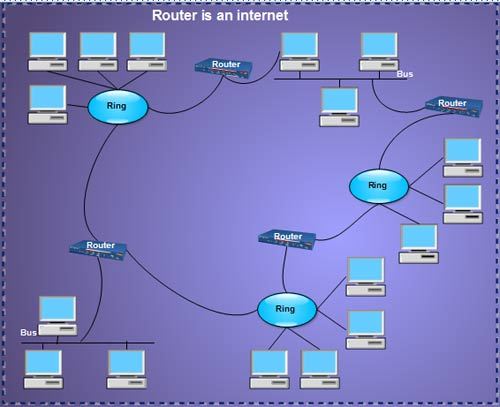Firstly we understand the concept of what is broadband connection in communication networks. Broadband is a high-capacity high-speed Data transmission medium. This can be done on a single cable by establishing different bandwidth channels. Broadband technology can be used to transmit voice, data and video over long distances simultaneously.
Routers capture the information that come through broadband connection via a modem and deliver it to your computer. The router choose route for the packet so that you receive the information Firstly. Routers are multi-port devices and more sophisticated as compared to repeaters and bridges. Routers also support filtering and encapsulation like bridges. They operate at physical, data link and network layer of OSI model.
Like bridges, they are self learning, as they can communicate their existence to other devices and can learn of the existence of new routers, nodes and LAN segments.
A router has access to the network layer address or logical address (IP address). It contains a routing table that enables it to make decisions about the route i.e. to determine which of several possible paths between the source and destination is the best for a particular transmission. These routing tables are dynamic and are updated using routing protocols.
The routers receive the packets from one connected network and pass them to a second connected network. However, if a received packet contains the address of a node that is on some other network (of which the router is not a member), the router determines which of its connected networks is the best next relay point for that packet. Once the router has identified the best route for a packet to travel, it passes the packet along the appropriate network to another router. That router checks the destination address, find what it considers the best route for the packet and passes it to the destination network.


We’ll be covering the following topics in this tutorial:
Types of Routers
There are several types of routers in the market.
Broadband Routers
Broadband routers can do different types of things. Broadband routers can be used to connect computers or to connect to the Internet.
If you connect to the internet through phone and using Voice over IP technology (VOIP) then you need broadband router. These are often a special type of modem (ADSL) that will have both Ethernet and phone jacks.
Wireless Routers
Wireless routers create a wireless signal in your home or office. So, any PC within range of Wireless routers can connect it and use your Internet.
In order to secure your Wireless routers, you simply need to come secure it with password or get your IP address. Then, you’ll log on into your router with the user ID and passwords will that come with your router.
Other Type of Router
Edge Router
This type of router are placed at the edge of the ISP network, the are normally configured to external protocol like BGP (Border gateway protocol) to another BGP of other ISP or large organization.
Subscriber Edge Router
This type of router belongs to an end user (enterprise) organization. It’s configured to broadcast external BGP to it’s provider’s AS(s)
Inter-provider Border Router
This type of router is for Interconnecting ISPs, this is a BGP speaking router that maintains BGP sessions with other BGP speaking routers in other providers’ ASes.
Core Router
A router that resides within the middle or backbone of the LAN network rather than at its periphery. In some instances , a core router provides a step down backbone , interconnecting the distribution routers from multiple building of a campus ( LAN), or Large enterprise Location (WAN). They tend to be optimized for a high bandwidth.
Wired and Wireless Routers.
Home and small office networking is becoming popular by day by the use of IP wired and wireless router.Wired and wireless router are able to maintain routing and configuration information in their routing table. They also provide the service of filtering traffic of incoming and outgoing packets based on IP addresses.
Some wireless routers combines the functions of router with those of a network switch and that of a firewall in one.
 Dinesh Thakur holds an B.C.A, MCDBA, MCSD certifications. Dinesh authors the hugely popular
Dinesh Thakur holds an B.C.A, MCDBA, MCSD certifications. Dinesh authors the hugely popular